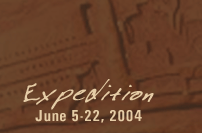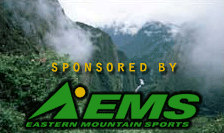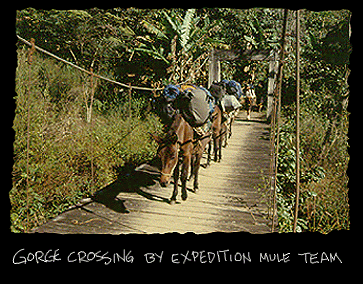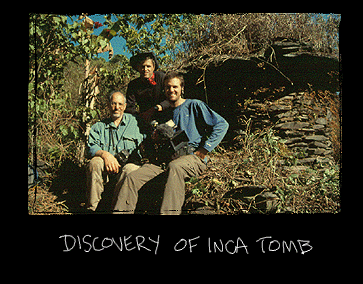|
:::
QUEST FOR PAITITI FIELD JOURNAL :::
ENTRY THIRTEEN (June 17, 2004) "EXHAUSTED"
On Thursday,
17 June, Paulino left us in the morning to travel as fast
as he could to Quebrada, the nearest town, in the valley of
the Rio Yanatile, where he would be able to find a public
phone and make a call to Cusco to let our vehicle know where
and when to come meet us. It would be a long trip, down to
the river, and then all the way over a mountain range. We
knew he was the one team member who was most able to do it,
though. This was his territory. Later that same day the rest
of us headed off as soon as fresh mules arrived at Mario´s
chacra. We loaded them up, three of them: it was a good thing
we had the extra mule now, as we no longer had Paulino´s
--two backpack--strength and endurance with us.
We made
a steep descent to a tributary of the Rio Mapacho, which we
crossed by way of a small rickety swaying bridge, and then
we crossed the Mapacho itself by way of a large rickety swaying
bridge. We then began a descent via tortuous mountain trails,
following the mules, that never let up that whole day, into
the range known as the Cordillera de Lares-Lacco. The Andean
sun cut through the thin air to sap our strength and move
us toward dehydration. Even the nearly super-human Goyo was
struggling under his heavy load, having contracted some kind
of illness. Finally, just after dark, we arrived at a campesino
settlement of two adjoined huts, and a patio of stone, where
we were graciously welcomed to make camp. There were giant
cockroaches aplenty, but for those of us who were dead-tired,
it was a picture of luxury. The place was called "Bellavista."
The next
morning's spectacular find is even more testimony to the difficulty
of exploring for ruins in this terrain- while answering a
call of nature, Greg noticed that there was a rectangular
form covered in
vegetation, nearby. Upon further observation, he realized
that it was
an Incan ruin, the stone walls of what had been a moderately
sized habitation. The stonework indicated that it was of "rustic"
Incan style. Back at Bellavista, the local folk told us of
another ruina that lay above us on the forested hillside.
We climbed up, through some dense underbrush, and found an
above-ground tomb, a "chullpa," that was the finest
preserved such specimen that we had ever seen. It was exactly
like the "Chullpas de Ninamarka," on the road to
Paucartambo, far to the southeast, vestiges of the Lupaca
culture that reached all the way there from its heartland
around Lake Titicaca. The tomb was of well-fitted fieldstone,
and it was circular, with a very low entrance-opening, and
with a roof formed by overlapping stones placed around one
lintel stone that spanned the diameter. There was nothing
inside the tomb, but it was important testimony to how these
remote, now-forested areas were intensely habitated by not
only the Incas but their predecesors.
We moved
on, to resume our climb over the Cordillera. The ascent was
so constant, at an altitude again approaching 12,000 feet,
that the mules had to be constantly goaded and threatened
with gutteral shouts of "¡Mula carajo!" for
them to keep going. Our own loads became heavier and heavier,
as well. At around 4 P.M. a welcome sound greeted us- a shout
from Paulino, who had arrived at the destination of Quebrada.
He had made his call and arrangements and then headed back
toward us. With his "animo" and help, we were able
to force ourselves up the final rise before emerging at "Abra
Bellavista," a point at which the end of a dirt road
for trucks snaked its way into the forested highland, twisting
and turning all the way from Quebrada. We bade farewell Mario
and gladly made the bone-shaking three-hour ride to Quebrada.
More
of the Paititi story would be ahead of us the next days...
~ Greg Deyermenjian
      
      
|




